In our latest blog post, we introduced the very beginning of the OAC’s image gallery that was launched just last month! By providing a non-commercial, bias-free collection of stock photos featuring individuals with obesity in a positive light, the project aims to reduce weight bias and change the perception of individuals living with obesity.
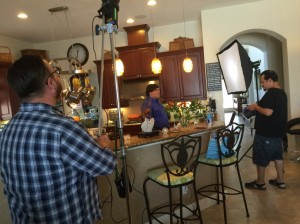
For this significant project, we reached out to well-renowned and respected photographer Rafael Concepcion (RC) to help us show the world what “obesity” really looks like. It’s not a picture of a headless person, or someone eating food in an animated way. It’s not a photo of someone standing on a tilting scale or a focus on specific parts of their body.
The OAC is incredibly thankful for the hard work, dedication and passion for this project that RC showed while on set during the making of the image gallery. Below, we share with you his own experiences with the project and what he hopes the gallery will do for the ongoing fight against weight bias.
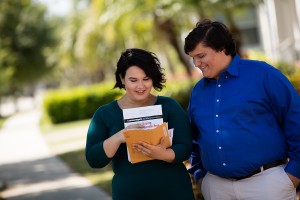 Rafael Concepcion – Doing his Part to Refocus Obesity
Rafael Concepcion – Doing his Part to Refocus Obesity
About a year ago, I sat down with James Zervios – the VP of Marketing and Communications at the OAC – who told me about an ambitious project that he was conceiving with the Obesity Action Coalition. The idea was to create an image gallery of people affected with obesity that showed them in a positive light. I remember feeling completely excited about the project as I thought this was an initiative that was sorely needed.
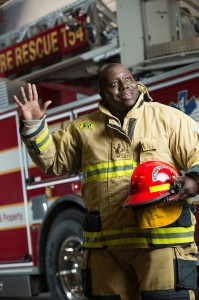 With over a third of adults suffering with obesity in the United States, the project seemed like a valuable conversation to have with our society. The media’s attention on obesity – be it positive or negative – always shows pictures of individuals with obesity in a light that doesn’t reflect a good image of the person. The images are always disembodied, anonymous and always objectifying – and they lay shame on these individuals through bad photography, poor posing, bad lighting and by showcasing them as they engage in activities that allow us, the viewers, to cast judgement on them.
With over a third of adults suffering with obesity in the United States, the project seemed like a valuable conversation to have with our society. The media’s attention on obesity – be it positive or negative – always shows pictures of individuals with obesity in a light that doesn’t reflect a good image of the person. The images are always disembodied, anonymous and always objectifying – and they lay shame on these individuals through bad photography, poor posing, bad lighting and by showcasing them as they engage in activities that allow us, the viewers, to cast judgement on them.
I felt that this project was important because those pictures are commonly used in society and do not reflect the totality of the individual that is pictured. When we take pictures, we generally strive to make sure that we look as good as we can for them. We want the image that is shown to reflect the best of ourselves – despite what we are suffering from. We make the choice to want to be photographed positively – and we want people to see past the picture to the person that is within the picture. In this space, however, the subjects are never given that choice. You know nothing about the person – nothing about how they are dealing with their obesity and nothing about the choices they are making in their current condition.
The photography in the media eliminates these facts and makes these individuals targets rather than people by painting the picture they want to paint on a person. We, as a society, should be better than this. Those thoughts made me want to jump feet first into completing this project.
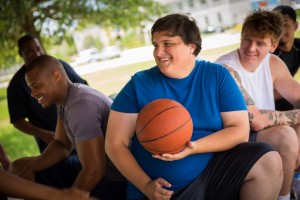 What I was not ready for was the amount of subtle resistance that the process would bring to bear during the photoshoots. I contacted modeling agencies to work with models for these shoots and received no response. Some agencies responded to my inquiries stating that they didn’t work with “…these kinds of people.” Organizations attempted to refer me to specialist companies – agencies that worked with “plus sized people.” I continued to call agencies to find models for the project and the responses sent back were images of individuals that were sent from blank casting calls – with many as just iPhone samples of individuals that were probably taken the day before.
What I was not ready for was the amount of subtle resistance that the process would bring to bear during the photoshoots. I contacted modeling agencies to work with models for these shoots and received no response. Some agencies responded to my inquiries stating that they didn’t work with “…these kinds of people.” Organizations attempted to refer me to specialist companies – agencies that worked with “plus sized people.” I continued to call agencies to find models for the project and the responses sent back were images of individuals that were sent from blank casting calls – with many as just iPhone samples of individuals that were probably taken the day before.
I had wardrobe stylists call me back and scoff at the thought of having to style “these people.” I had stylists inform me that “…clothes for these kinds of people are not things that you can normally find” – and many turned down jobs entirely because of the subject matter. Makeup stylists returned calls informing me that this project sat out of the realm of the work that they did because it focused on other types of individuals.
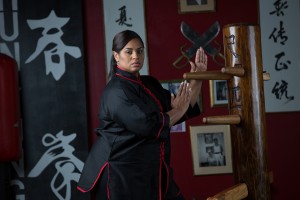 I even had locations cancel nearly a day before a shoot after considering that the subject matter was not something they could get behind. I was attempting to work with companies to co-sponsor this project who flatly refused to cooperate because of the subject matter.
I even had locations cancel nearly a day before a shoot after considering that the subject matter was not something they could get behind. I was attempting to work with companies to co-sponsor this project who flatly refused to cooperate because of the subject matter.
Now, I could completely understand this line of thinking if I were shooting something very out of the ordinary. I wasn’t looking for fire breathers performing on top of a luxury vehicle on a closed street in the middle of the city. I wanted to make a picture of a person. Having coffee. At a coffee shop.
I wanted to make a picture of a person – who represented a third of the population of the entire United States.
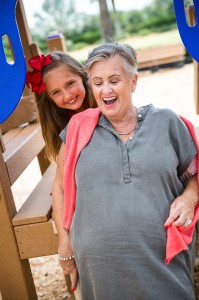 To say that this project was one of the most difficult to realize would be a severe understatement. This, however, encouraged me to push even harder to get this project done. It inspired me to want to take it even further – and hope to start a conversation about this on a bigger scale.
To say that this project was one of the most difficult to realize would be a severe understatement. This, however, encouraged me to push even harder to get this project done. It inspired me to want to take it even further – and hope to start a conversation about this on a bigger scale.
I had two additional motivations for wanting to succeed here. First – I am an individual who has suffered with obesity. I’ve weighed over 300 pounds and have lost 100. I’ve gained 60, then lost 20. Through all of this, I’ve watched how individuals’ reactions with me changed – and I have been keenly aware of the struggle that this illness can bring. I’ve also been keenly aware as to how this fight within me has affected my self-esteem and worth. At my heaviest, I remember feeling so completely alone and misunderstood. Someone making the effort to want to make a picture that showcased me would have been a welcomed boost in my time of isolation.
Second – I work as a photographer and educator. I work in a space where I constantly hear my photographic peers talk about what makes an image great – and this greatness is usually measured in how attractive the subject is. To that, the portfolios of photographers in this space showcase models of various ethnicities but never someone of weight. The industry, I feel, sits complicit on teaching its up and coming photographers that ignoring one third of our population is the first step in creating a memorable image. Part of me felt complicit by not realizing this sooner. I felt, in some weird way, that this project would let me showcase the beauty of everyone. Part atonement – part personal mission.
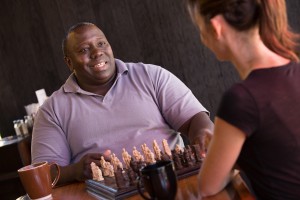 One of the things that brought me great joy in working on this project was the subjects themselves. Once we were set in making the pictures, the people who were willing to get a picture made offered wonderful stories about who they are, how they are dealing with obesity and how they wish more individuals would dig a little deeper into the people behind the pictures. These interactions with the subjects themselves gave me the fuel to continue and the seeds to see if there was something more that we could do to start this conversation.
One of the things that brought me great joy in working on this project was the subjects themselves. Once we were set in making the pictures, the people who were willing to get a picture made offered wonderful stories about who they are, how they are dealing with obesity and how they wish more individuals would dig a little deeper into the people behind the pictures. These interactions with the subjects themselves gave me the fuel to continue and the seeds to see if there was something more that we could do to start this conversation.
The truth of the matter is this – in our current space, we have no real idea of what a person dealing with obesity is facing just by looking at a photograph. How can we celebrate, empathize, relate or involve ourselves with people if the pictures we see only offer a sliver of perspective into the person themselves?
Is it not the incumbent of the photographer to use the power of the camera to try to show more of the person in front of it?
To do this, I was inspired to start a project where I wanted to make portraits of individuals with obesity that are a little different from what we normally see in this space. Instead of just seeing a picture of a person dealing with obesity, you’ll see a portrait that really showcases who this person is and tells a little more of a story behind them.
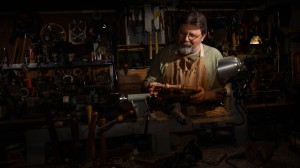 My first subject was a dear friend – Kim Patti (pictured right). When working with this project, he told me that he himself struggles with obesity. Despite this, no one would know that he was a retired military man from both the Army and the Navy. No one would know that he works as a master woodworker and takes no money from the projects he makes. He works tirelessly in his garage and only asks for people to donate to the American Cancer Society in return. Now, imagine if the only picture that we saw of this person was the ‘traditional’ faceless profile. Would we want to know more about him? Would we want to have a conversation about who he is? Would we relate?
My first subject was a dear friend – Kim Patti (pictured right). When working with this project, he told me that he himself struggles with obesity. Despite this, no one would know that he was a retired military man from both the Army and the Navy. No one would know that he works as a master woodworker and takes no money from the projects he makes. He works tirelessly in his garage and only asks for people to donate to the American Cancer Society in return. Now, imagine if the only picture that we saw of this person was the ‘traditional’ faceless profile. Would we want to know more about him? Would we want to have a conversation about who he is? Would we relate?
The portrait that we made indicates more of who he is rather than what he is struggling with. I don’t intend to hide that he is struggling with obesity. I just intend for it not to be the first thing that you see.
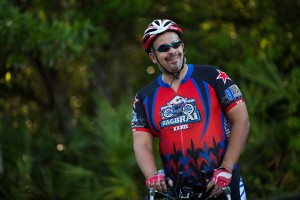 Another subject – Larry Davis (pictured left). Here is another person who has his own struggles with obesity, but very few would know that he is an avid cyclist. Our current view of making images of someone like Larry would never show us that he is achieving physical feats that not many of us could do. Larry can move on his bike – and we should celebrate that part first. By celebrating him first, we ask to have a deeper connection with the person behind the picture.
Another subject – Larry Davis (pictured left). Here is another person who has his own struggles with obesity, but very few would know that he is an avid cyclist. Our current view of making images of someone like Larry would never show us that he is achieving physical feats that not many of us could do. Larry can move on his bike – and we should celebrate that part first. By celebrating him first, we ask to have a deeper connection with the person behind the picture.
I’m hoping that this series lets us start a conversation that truly refocuses how we see obesity. The stock image library was a wonderful project that I was happy to participate in. I feel like it is invaluable to get us back from the negative position that society has unfortunately interpreted. The library brings us to – at bare minimum – equal footing. Continuing this project and working on refocusing obesity will help show that we all deserve the dignity of the photograph. That we all deserve the moment to have someone look a little further and a little deeper.
About the Author:
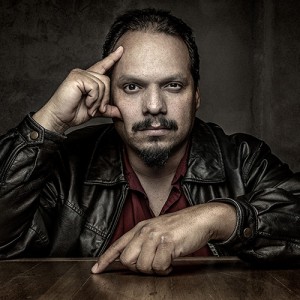 Rafael “RC” Concepcion is an award-winning photographer and author of the best selling books “Get Your Photography On the Web” and “The HDR Book” by Peachpit Press. An Adobe Certified instructor in Photoshop, Illustrator and Lightroom, RC has over 16 years in the I.T. and e-commerce industries and spends his days developing content for all applications in the Adobe Creative Suite.
Rafael “RC” Concepcion is an award-winning photographer and author of the best selling books “Get Your Photography On the Web” and “The HDR Book” by Peachpit Press. An Adobe Certified instructor in Photoshop, Illustrator and Lightroom, RC has over 16 years in the I.T. and e-commerce industries and spends his days developing content for all applications in the Adobe Creative Suite.
A sought-after public speaker, he lectures at seminars and workshops around the world to passionate artists looking to gain a better understanding of their craft.
To see RC’s latest courses online, please visit: https://www.aboutrc.com/
The OAC thanks RC once again for his dedication to the production of this image gallery. We wouldn’t have been able to take this step toward our five year goal of reducing weight bias without his support!
